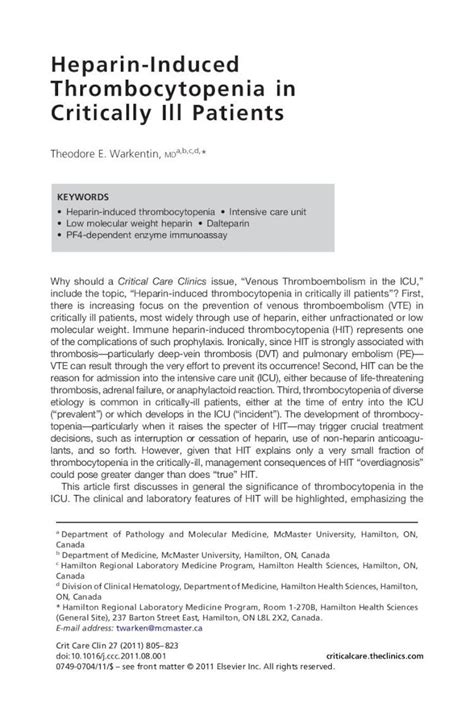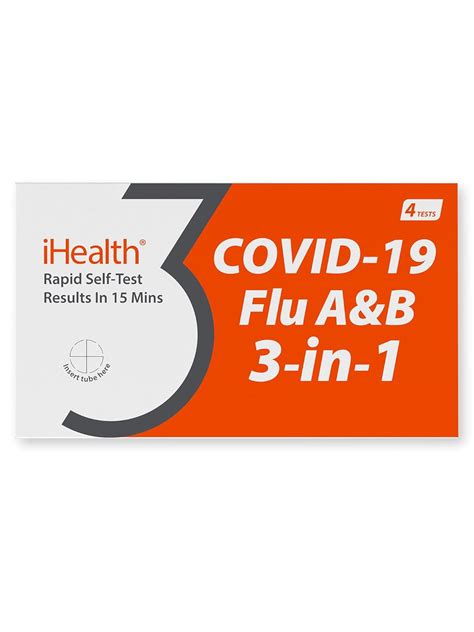Thrombocytopenia, a condition characterized by an abnormally low level of platelets in the blood, can be a significant complication of heparin therapy. Heparin, an anticoagulant commonly used to prevent and treat blood clots, can induce an immune-mediated response leading to heparin-induced thrombocytopenia (HIT), a potentially life-threatening condition. Managing heparin therapy effectively and being aware of the risks and prevention strategies for thrombocytopenia are crucial for healthcare providers and patients alike.
Understanding Heparin-Induced Thrombocytopenia (HIT)
HIT is a complex disorder that occurs when the body’s immune system produces antibodies against the complex of heparin and platelet factor 4 (PF4), a protein released by platelets. These antibodies activate platelets, leading to the formation of blood clots and a decrease in the number of circulating platelets due to their consumption in the clotting process. The risk of HIT is higher with unfractionated heparin compared to low molecular weight heparin (LMWH), and it typically occurs 5 to 10 days after the initiation of heparin therapy, although it can occur sooner in patients who have been exposed to heparin in the recent past.
1. Monitoring Platelet Counts
Regular monitoring of platelet counts is essential for early detection of HIT. For patients on heparin, platelet counts should be checked every other day from day 4 to day 14 of heparin therapy or until the medication is stopped, whichever comes first. Any unexplained drop in platelet count by 50% or more from the baseline value should prompt further investigation for HIT.
2. Using Alternative Anticoagulants
For patients at high risk of HIT or those who have developed HIT, alternative anticoagulants such as direct thrombin inhibitors (e.g., argatroban, bivalirudin) or factor Xa inhibitors (e.g., fondaparinux) should be considered. These medications do not cross-react with heparin-induced antibodies and can effectively prevent new thrombus formation without increasing the risk of bleeding.
3. Avoiding Heparin Flushes
Heparin flushes used to maintain the patency of intravenous lines can also induce HIT. For patients at risk, consider using saline flushes instead, especially if the patient is not on therapeutic heparin.
4. Implementing a Heparin Protocol
Hospitals and healthcare institutions should have a protocol in place for the use of heparin, including guidelines for monitoring, dosage adjustment, and transition to alternative anticoagulants if HIT is suspected. A standardized approach helps in early detection and management of HIT, reducing the risk of complications.
5. Educating Healthcare Providers
All healthcare providers involved in the care of patients on heparin should be educated about the risks of HIT, its presentation, and the urgency of reporting any suspected cases. This includes recognizing the clinical signs of thrombocytopenia and understanding the importance of timely laboratory tests to confirm the diagnosis.
6. Patient Education
Patients should be informed about the potential risks of heparin therapy, including the signs and symptoms of HIT. Encouraging patients to report any unusual bruising, bleeding, or signs of thrombosis promptly can aid in the early detection of complications.
7. Avoiding Overlapping Anticoagulation
When transitioning patients from one anticoagulant to another, overlapping therapy should be avoided unless absolutely necessary, as this can increase the risk of bleeding without providing additional protection against HIT.
8. Utilizing HIT Scoring Systems
Clinical scoring systems, such as the 4Ts score, can help in assessing the probability of HIT in patients with thrombocytopenia. This score evaluates the degree of thrombocytopenia, the timing of platelet count fall, the presence of thrombosis, and the absence of other causes of thrombocytopenia. A high score can prompt further diagnostic testing and guide the decision to stop heparin and initiate alternative anticoagulation.
9. Prompt Diagnostic Testing
If HIT is suspected, heparin should be stopped immediately, and diagnostic tests, including enzyme-linked immunosorbent assay (ELISA) for HIT antibodies and functional assays (e.g., serotonin release assay), should be performed promptly. The choice of test may depend on the clinical scenario and the availability of testing facilities.
10. Developing a Treatment Plan
For patients diagnosed with HIT, a treatment plan should be developed in consultation with specialists. This may involve the use of alternative anticoagulants, aggressive management of thrombosis, and careful monitoring for complications. Warfarin, a commonly used oral anticoagulant, should be avoided until platelet counts have recovered, as it can exacerbate the condition.
11. Continuous Quality Improvement
Healthcare institutions should regularly review cases of HIT to identify areas for improvement in prevention, detection, and management. This may involve updating protocols, providing additional education to staff, and implementing quality control measures to minimize the risk of HIT.
In conclusion, the management of heparin therapy to prevent thrombocytopenia risks requires a multifaceted approach that includes vigilant monitoring, prompt recognition of potential complications, and effective collaboration among healthcare providers. By implementing these strategies, the risk of HIT can be minimized, and patient outcomes can be significantly improved.
What is the primary mechanism behind heparin-induced thrombocytopenia (HIT)?
+HIT occurs when antibodies form against the complex of heparin and platelet factor 4 (PF4), leading to platelet activation, thrombosis, and a decrease in circulating platelets.
How often should platelet counts be monitored in patients on heparin?
+Platelet counts should be checked every other day from day 4 to day 14 of heparin therapy or until heparin is stopped.
What alternative anticoagulants can be used in patients at high risk of HIT?
+Direct thrombin inhibitors (e.g., argatroban, bivalirudin) and factor Xa inhibitors (e.g., fondaparinux) can be used as alternatives to heparin in high-risk patients.



